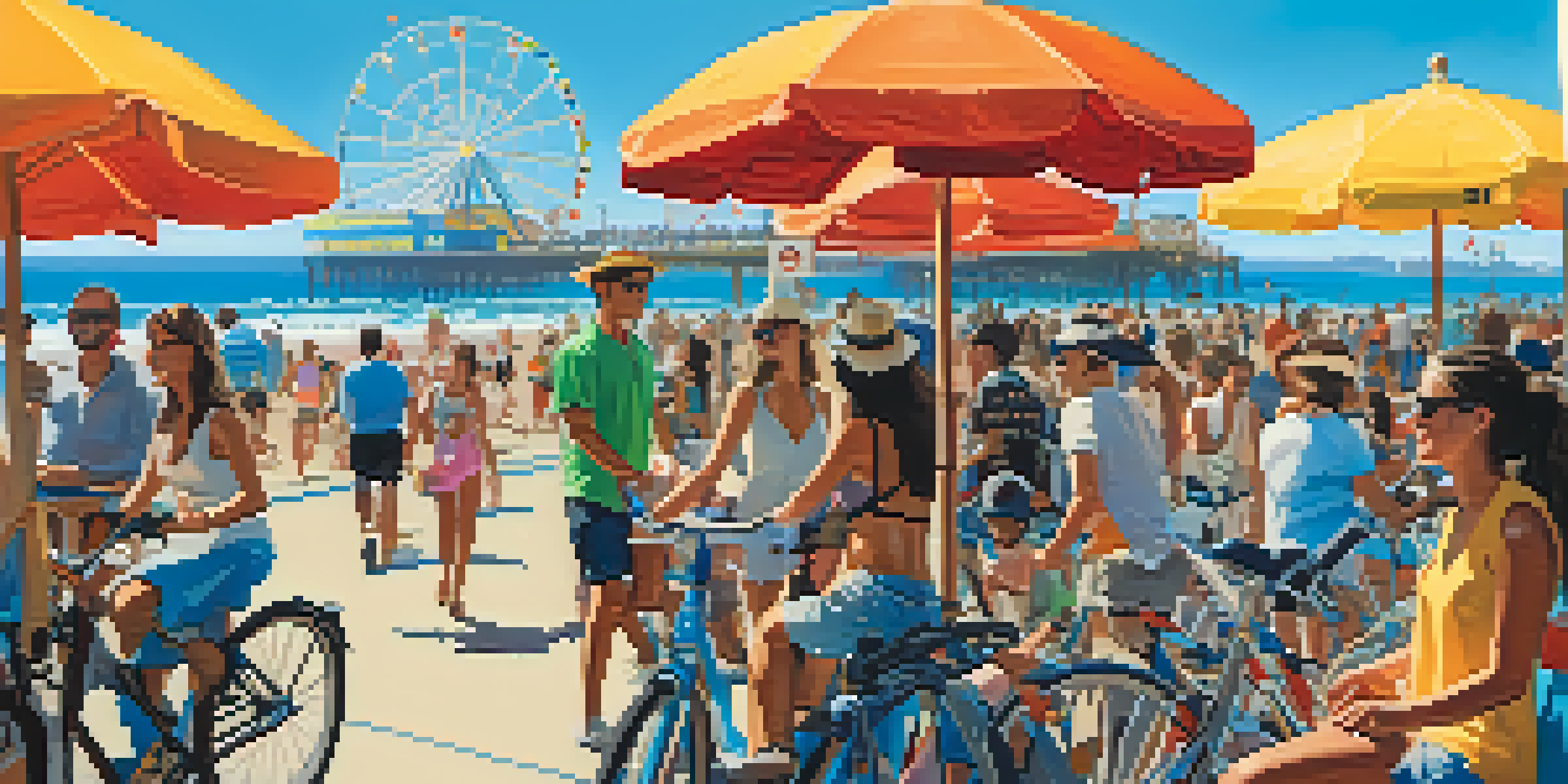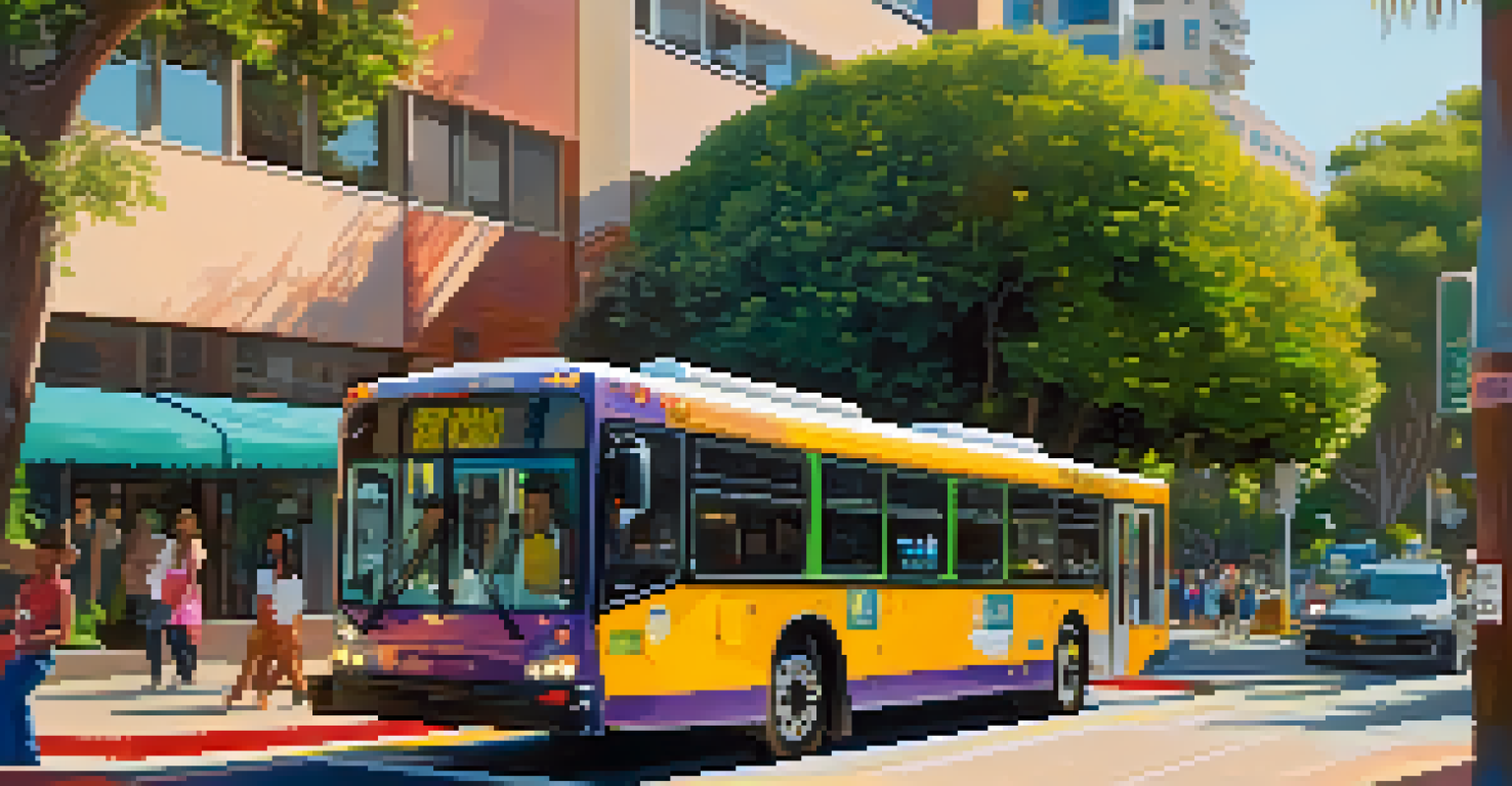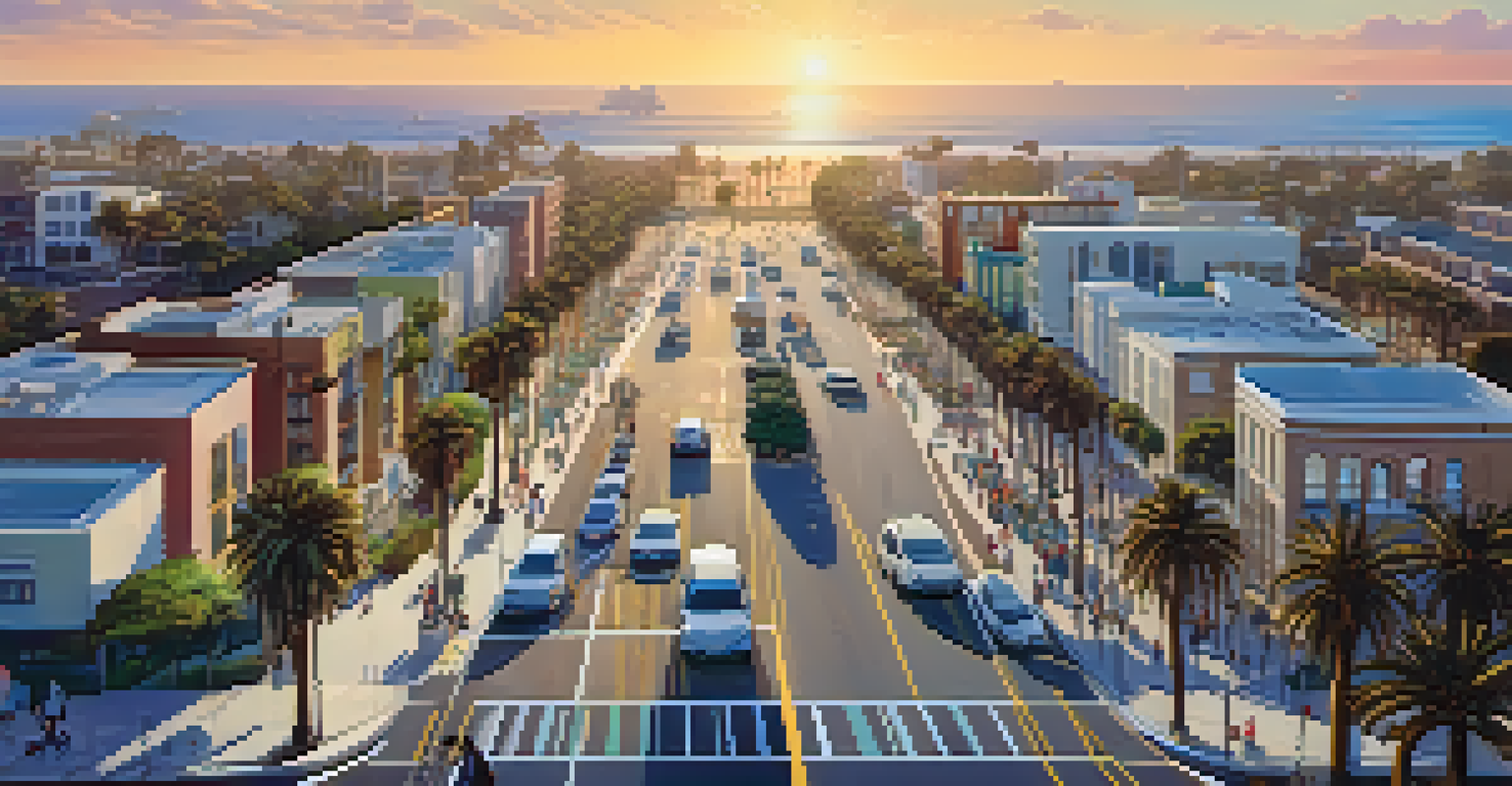Impact of Transportation Infrastructure on Santa Monica Planning

Understanding Santa Monica's Unique Transportation Landscape
Santa Monica's transportation infrastructure is a vital part of its urban identity. From the iconic Santa Monica Pier to bustling Third Street Promenade, the city's layout is intricately tied to how residents and visitors navigate through it. The combination of public transit, bike lanes, and pedestrian-friendly areas reflects a conscious effort to promote accessibility and sustainability.
Public transportation is the backbone of a community, providing access to jobs, education, and essential services.
Moreover, the city's strategic position along the Pacific Coast Highway makes it a hub for commuters and tourists alike. This geographical advantage has spurred growth, but it also brings challenges like traffic congestion and environmental concerns. Balancing these elements is critical for effective city planning.
Ultimately, understanding the transportation landscape is essential for stakeholders aiming to foster a thriving community. By recognizing how infrastructure impacts daily life, planners can make informed decisions that enhance mobility and quality of life in Santa Monica.
The Historical Evolution of Santa Monica's Transportation Systems
Transportation in Santa Monica has undergone significant changes over the decades. Initially, streetcars were the backbone of local transit, connecting neighborhoods and businesses, until the rise of automobiles shifted the focus away from public transport. This evolution mirrors broader trends in urban planning during the 20th century, where car-centric design became prevalent.

As the city grew, so did the need for effective infrastructure to support an increasing population. This led to the development of major thoroughfares and freeways that dominate the landscape today. However, the reliance on cars has also contributed to congestion and pollution, prompting a reevaluation of priorities in urban planning.
Santa Monica's Transport Evolution
Santa Monica's transportation systems have transformed from streetcars to car-centric infrastructure, prompting a renewed focus on sustainable options.
In recent years, Santa Monica has made strides to reintegrate sustainable transportation options, signaling a return to its roots. This historical journey highlights the importance of adapting infrastructure to meet the changing needs of the community while addressing environmental and social challenges.
Current Transportation Initiatives in Santa Monica
Currently, Santa Monica is at the forefront of innovative transportation initiatives aimed at enhancing urban mobility. These initiatives include the expansion of bike lanes, improvements to public transit options, and the promotion of electric vehicle charging stations. Such efforts reflect a commitment to reducing carbon emissions and fostering a more sustainable transportation ecosystem.
A city’s transportation system is not just about getting from point A to point B; it’s about connecting people to opportunities.
The city's 'GoSM' program is particularly noteworthy, as it encourages residents to adopt alternative modes of transport. By offering incentives for biking, walking, and using public transit, the program aims to reduce reliance on cars and enhance overall community well-being. This initiative not only addresses environmental concerns but also promotes healthier lifestyles.
Additionally, Santa Monica's focus on smart technology integration is paving the way for a more connected urban experience. From real-time transit updates to mobile apps facilitating ridesharing, these advancements enhance the convenience and efficiency of transportation options available to residents and visitors.
The Role of Public Transit in Urban Planning
Public transit plays a crucial role in shaping Santa Monica's urban landscape. By providing reliable transportation options, it reduces traffic congestion and promotes economic growth. The city’s Metro Expo Line, for instance, connects Santa Monica to larger regional networks, making it easier for residents to commute and access jobs across Los Angeles County.
Moreover, public transit fosters inclusivity by offering affordable transportation options to those who may not own vehicles. This accessibility is vital for low-income communities and contributes to a more equitable urban environment. Planners are increasingly recognizing the need to prioritize public transit in their development strategies.
Innovative Initiatives for Mobility
Current initiatives like the 'GoSM' program and expanded bike lanes aim to enhance urban mobility and reduce carbon emissions.
As Santa Monica continues to grow, the integration of public transit into urban planning will be essential. A well-connected transit system can enhance mobility, attract businesses, and improve the quality of life for all residents, ultimately shaping a vibrant community.
Impact of Transportation on Local Economy and Development
Transportation infrastructure significantly influences Santa Monica's local economy and development. A well-planned transit system can attract businesses, increase property values, and enhance tourism, creating a prosperous economic environment. For example, the revitalization of areas near transit stations often leads to new commercial developments and increased foot traffic.
Furthermore, ease of transportation can directly affect job accessibility for residents. When people can easily commute to work, it not only benefits individuals but also strengthens the local labor market. This interconnectedness highlights the importance of investing in transportation infrastructure to foster economic growth.
In essence, a strong transportation network serves as the backbone of Santa Monica's economic vitality. By prioritizing infrastructure improvements, the city can ensure sustainable development and a thriving local economy for years to come.
Sustainability and Green Transportation Initiatives
Sustainability is a core focus of Santa Monica's transportation planning efforts. The city has implemented various green initiatives aimed at reducing its carbon footprint and promoting environmentally friendly modes of transportation. This includes expanding bike lanes and integrating electric vehicle charging stations throughout the city, making it easier for residents to opt for greener alternatives.
Moreover, Santa Monica has embraced the concept of 'complete streets,' which prioritize safe and accessible transportation for all users, including pedestrians, cyclists, and public transit riders. This holistic approach not only promotes environmental sustainability but also enhances overall community health and well-being.
Public Transit's Economic Impact
A robust public transit system is crucial for economic growth, job accessibility, and overall community well-being in Santa Monica.
By fostering a culture of sustainability in transportation, Santa Monica sets a precedent for other urban areas to follow. These initiatives demonstrate a commitment to creating a more livable city while addressing the urgent challenges posed by climate change.
Future Transportation Planning: Challenges and Opportunities
As Santa Monica looks to the future, it faces both challenges and opportunities in transportation planning. Rapid population growth and increasing traffic congestion pose significant hurdles, necessitating innovative solutions that prioritize efficiency and sustainability. Planners must find ways to accommodate more residents while maintaining the city's unique character and quality of life.
One opportunity lies in the continued development of smart transportation technologies. By leveraging data and technology, the city can improve traffic management, optimize public transit routes, and enhance the overall user experience. This data-driven approach can lead to more informed decision-making and better outcomes for the community.

Ultimately, the future of transportation in Santa Monica hinges on collaboration among stakeholders, including city officials, residents, and businesses. By working together, they can create a comprehensive transportation strategy that addresses current needs while preparing for future growth and challenges.